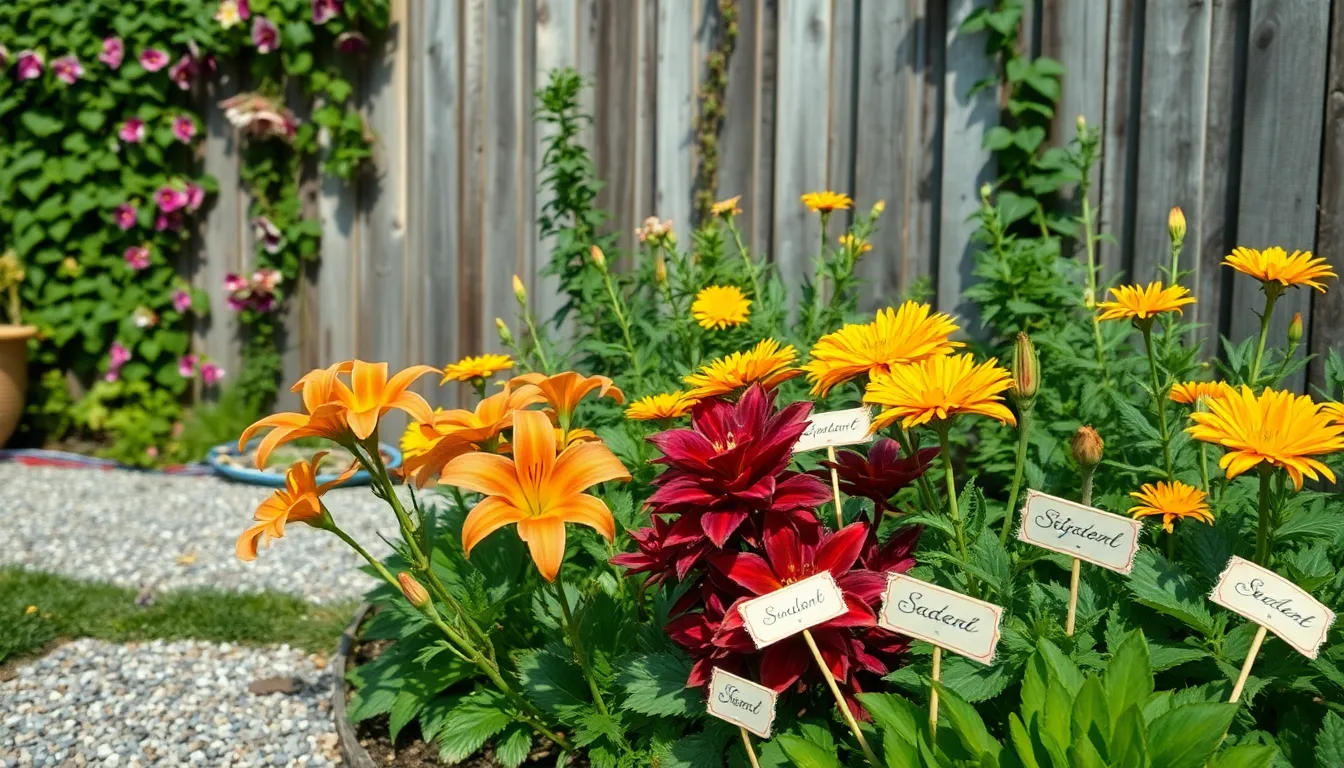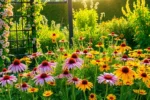Whether you’re a seasoned gardener with years of dirt under your nails or a newcomer still getting acquainted with the joys of planting, every gardener dreams of a resilient garden that can withstand life’s unpredictabilities. Imagine a garden that thrives despite the occasional oversight, a sanctuary of green that forgives the busy weeks when watering can be forgotten. This dream is closer to reality than you might think, thanks to the wonders of hardy perennials capable of flourishing with minimal attention.
In this article, we’ll uncover nine remarkable perennials that not only survive but thrive under neglect, offering vibrant blooms and foliage year after year. You’ll learn about these robust plants’ unique characteristics, their ability to adapt, and how they effortlessly bring life and color to your garden without demanding constant care. By the end, you’ll feel empowered to cultivate a garden that aligns with your lifestyle, offering beauty and resilience with minimal effort.
For those just starting on their gardening journey, this could be the perfect introduction to the world of perennials, showing you that a thriving garden doesn’t always require a green thumb. Experienced gardeners, on the other hand, may discover new favorites to add to their collection or find reassurance in knowing these steadfast plants will support their gardening endeavors regardless of time constraints. Let’s embark on this journey together, uncovering how to create a garden that stands the test of time and neglect, inviting you to enjoy the beauty without the burden.
Understanding Perennial Plant Resilience
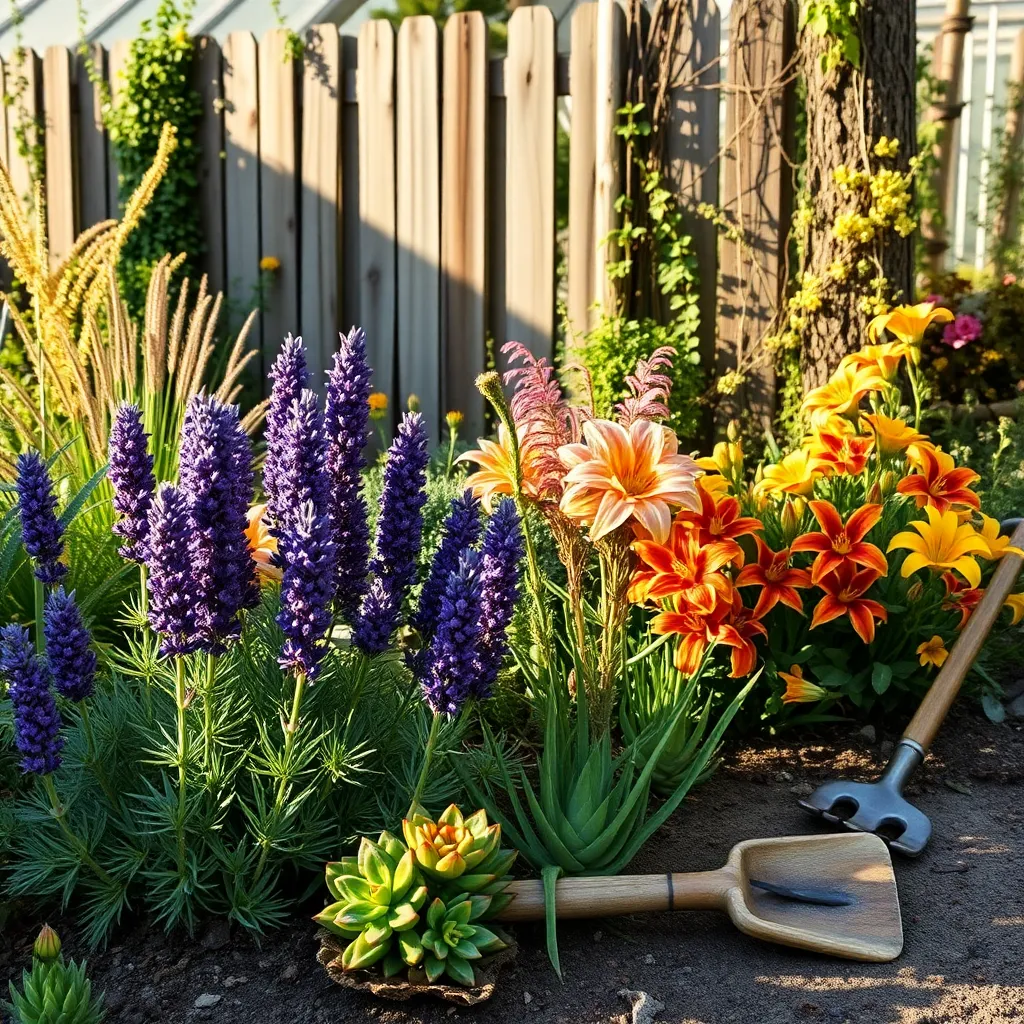
Perennial plants are known for their remarkable ability to thrive with minimal care, making them a popular choice for gardeners who may not have the time for constant upkeep. Understanding their resilience begins with recognizing their natural adaptations to various environmental conditions.
Most perennials have deep root systems that allow them to access moisture even during dry spells. These roots not only enable them to survive neglect but also make them excellent choices for drought-prone areas.
Another key aspect of their hardiness is their ability to go dormant during unfavorable seasons, conserving energy until conditions improve. This natural cycle means that even if they appear lifeless during winter, they will often return with vigor in the spring.
To make the most of perennial resilience, plant them in well-draining soil enriched with organic matter to promote healthy growth. Mulching is a simple yet effective strategy to retain soil moisture and regulate temperature, further enhancing their ability to withstand neglect.
Water perennials deeply but infrequently, mimicking natural rainfall patterns to encourage root growth. For those looking to push their gardening skills further, consider dividing perennials every few years to maintain their vitality and spread their beauty throughout your garden.
The Benefits of Low-Maintenance Plants

Low-maintenance plants are a gardener’s best friend, especially for those with busy schedules. These plants require minimal attention, making them perfect for both beginners and seasoned gardeners looking to save time.
One of the greatest benefits of low-maintenance plants is their ability to thrive in various conditions. Many of these plants are quite adaptable, tolerating a range of soil types from sandy to clayey, and they often require less frequent watering.
For those new to gardening, choosing low-maintenance plants can be a less daunting introduction to plant care. These plants typically have fewer pest problems and are often more disease-resistant, reducing the need for constant monitoring and intervention.
Experienced gardeners can also appreciate the ease of care, allowing them to focus on more challenging plants or garden projects. Moreover, low-maintenance plants can serve as excellent fillers in your garden, providing lush greenery without the hassle of constant upkeep.
When planting low-maintenance perennials, ensure that they receive the appropriate amount of sunlight, which can range from full sun to partial shade depending on the species. Additionally, a light layer of mulch can help retain soil moisture and suppress weeds, adding further to their ease of care.
For added success, consider grouping plants with similar water and light needs together. This not only simplifies care but also creates a visually harmonious garden that thrives with minimal effort.
Characteristics of Hardy Perennials
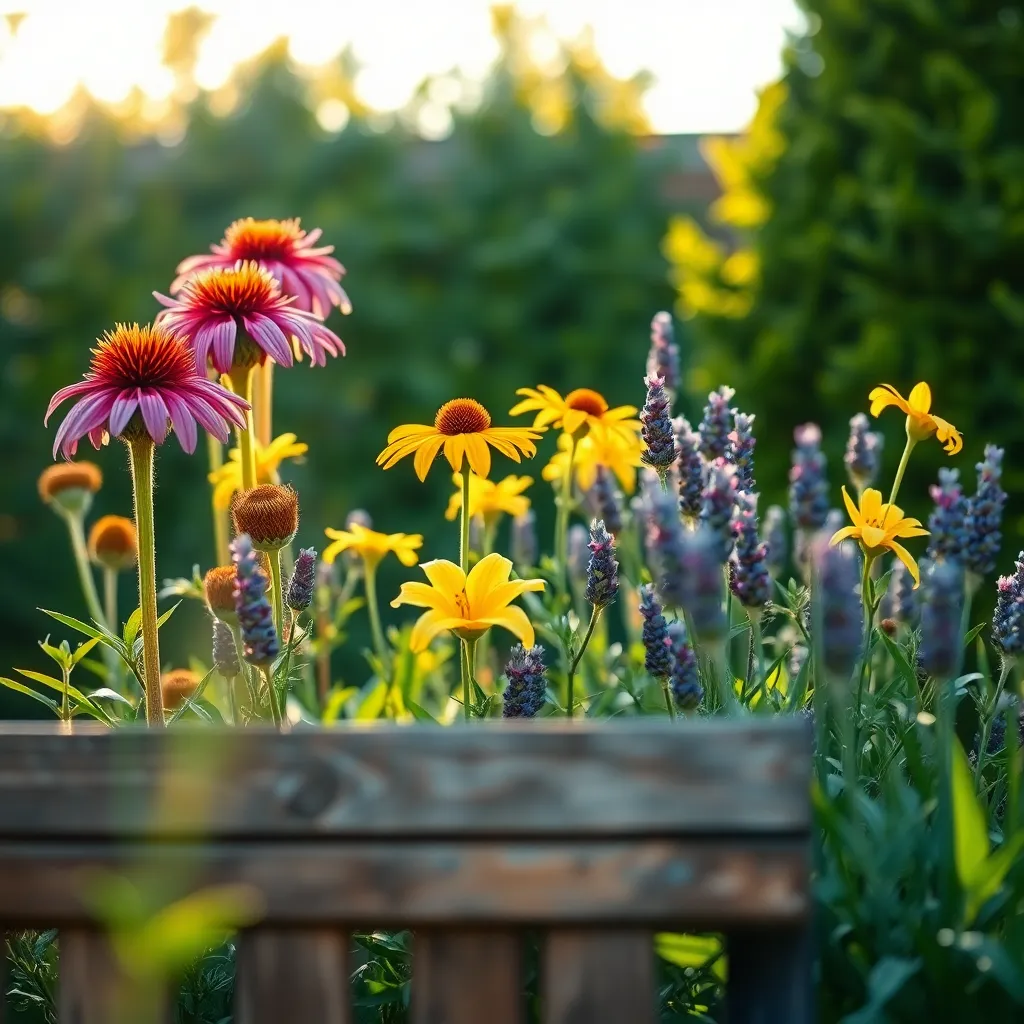
Hardy perennials are a gardener’s best friend due to their ability to thrive with minimal care. These plants are known for their resilience, often surviving harsh weather conditions and neglect.
One key characteristic of hardy perennials is their adaptability to various soil types. While they prefer well-draining soil, many can tolerate poor soil conditions, making them ideal for less-than-perfect garden spots.
Watering these plants is straightforward, as they often require only occasional watering. During dry spells, a deep soak every few weeks is usually sufficient to keep them healthy and blooming.
For those looking to add hardy perennials to their garden, consider incorporating a layer of mulch around the base. This helps retain moisture and suppress weeds, further reducing maintenance efforts.
Top Perennials for Neglect Survival
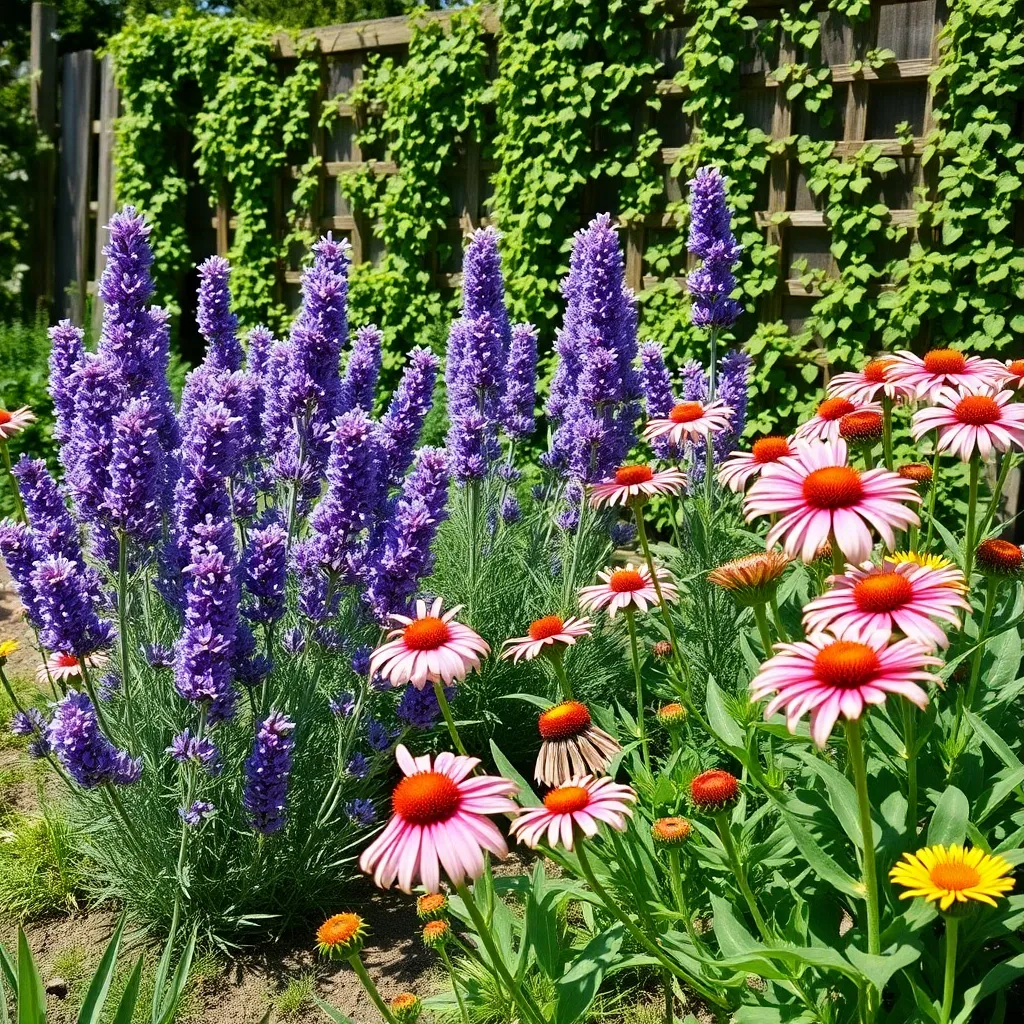
When it comes to perennials that can thrive despite occasional neglect, the daylily is a top contender. This resilient plant adapts to various soil types, though it prefers well-drained, slightly acidic soil for optimal growth.
Daylilies are drought-tolerant once established, making them ideal for gardeners who might forget to water regularly. For best results, water them deeply but infrequently, allowing the soil to dry out between watering sessions.
Another excellent choice for low-maintenance gardens is the black-eyed Susan. This plant not only survives but often thrives in poor soil and full sun, making it perfect for those sunny, forgotten corners of the garden.
Black-eyed Susans are remarkably pest-resistant, which minimizes the need for chemical interventions. To encourage robust blooms, deadhead spent flowers regularly and apply a layer of mulch to retain soil moisture.
Lamb’s ear is another perennial that can handle neglect, especially in dry conditions. Its silvery, velvety leaves add a unique texture and are exceptionally drought-tolerant once established.
Although lamb’s ear thrives with minimal care, it benefits from pruning back in early spring to maintain a tidy appearance. Ensure well-drained soil conditions to prevent root rot, and avoid overhead watering to keep the foliage dry.
Drought-Tolerant Perennial Options
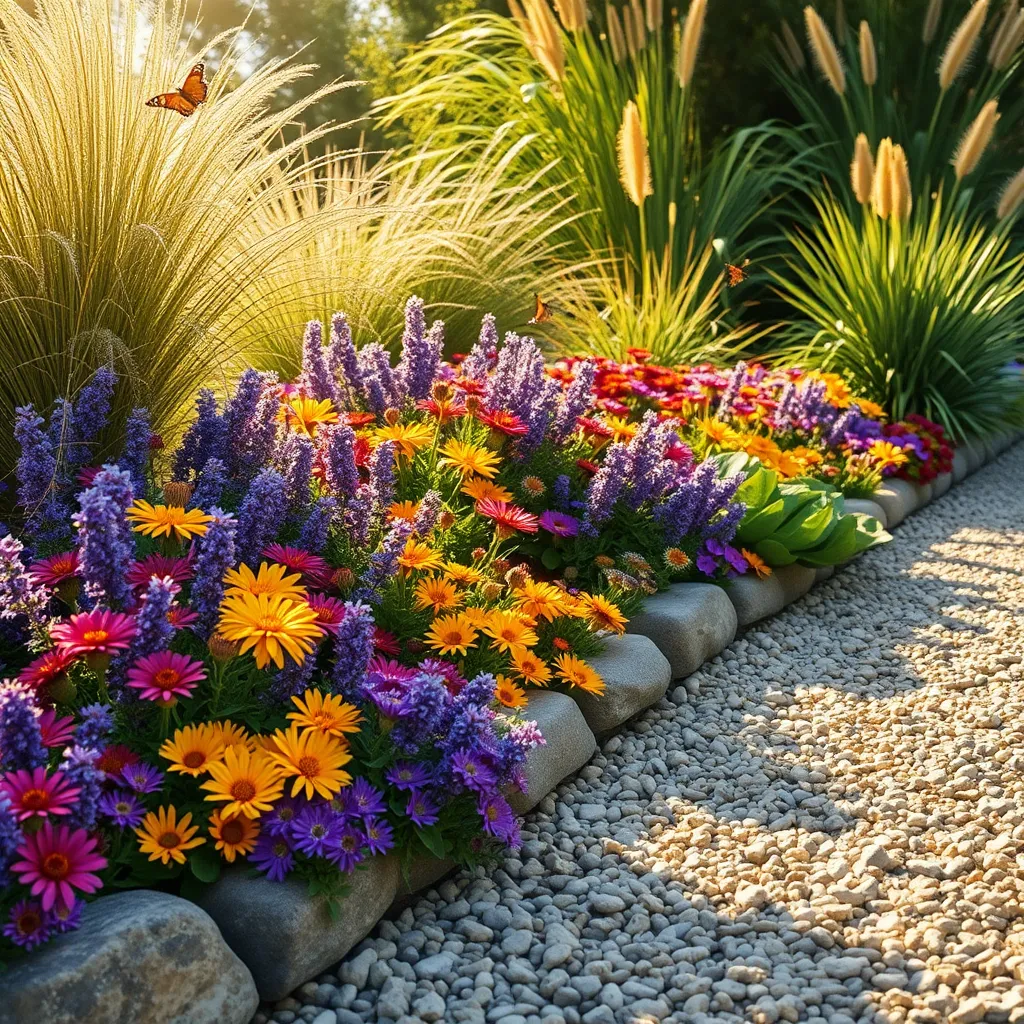
When it comes to drought-tolerant perennials, Lavender is a standout option, thriving in well-drained soils with minimal watering. Plant your lavender in a sunny spot, ideally in sandy or rocky soil, and it will reward you with fragrant blooms that attract pollinators.
Yarrow is another resilient choice, known for its ability to flourish in poor soil conditions and hot climates. This perennial is incredibly hardy, requiring only occasional watering once established, making it perfect for those who might forget to water regularly.
Consider Sedum, a succulent perennial that stores water in its leaves and thrives in full sun and dry conditions. Its low-maintenance nature makes it ideal for rock gardens or as a ground cover in sunny areas.
If you’re looking for something with a bit more height, Russian Sage offers tall, airy spikes of lavender-blue flowers and thrives in full sun with minimal irrigation. This perennial is both deer-resistant and drought-tolerant, making it a practical choice for a low-maintenance garden.
To ensure success with these plants, add a layer of mulch around their bases to help retain moisture and suppress weeds. Keep in mind that while these perennials are drought-tolerant, they will still need regular watering during their first season to establish strong root systems.
Shade-Loving Perennials for Easy Care
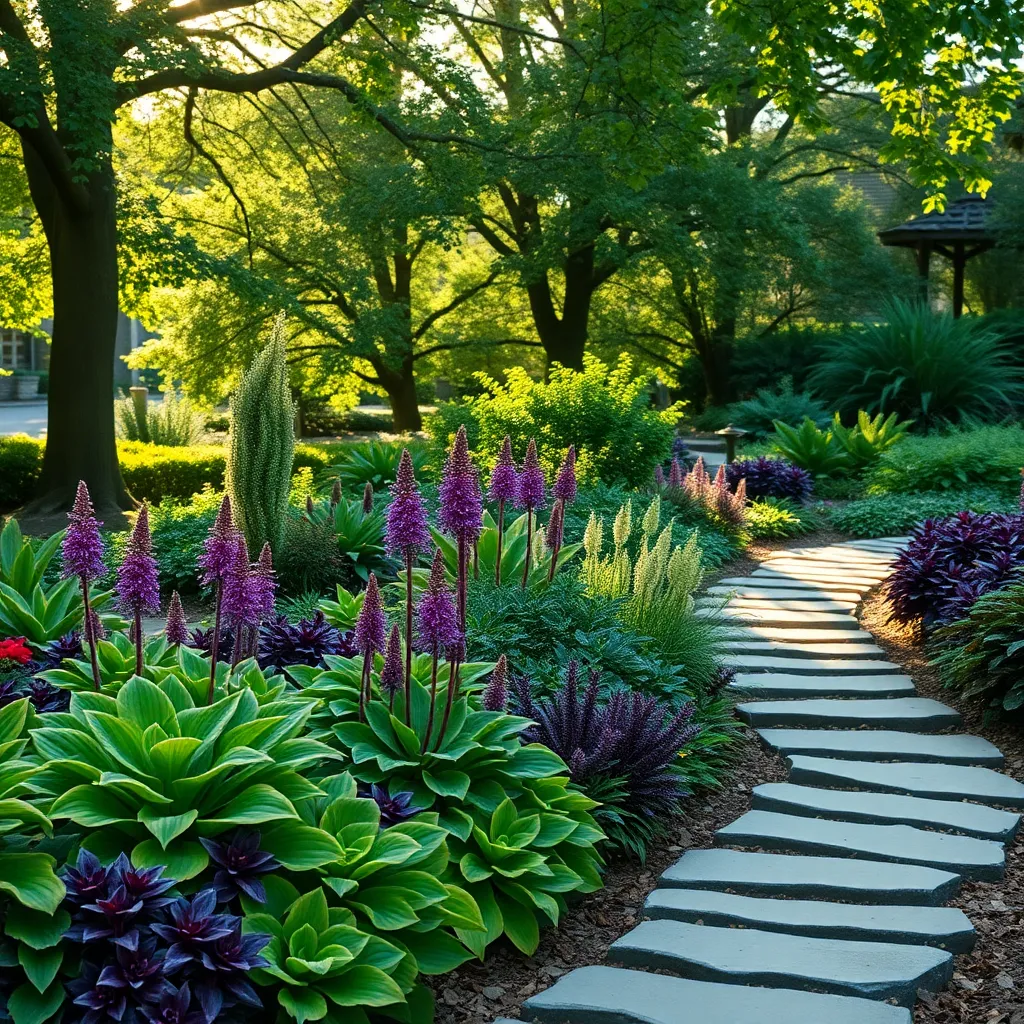
Many shade-loving perennials are perfect for gardeners who need low-maintenance options. One such plant is the Hosta, which thrives in shaded areas and requires minimal care once established.
Hostas prefer moist, well-drained soil, making them a good choice for areas where water retention is an issue. To keep them healthy, apply a layer of mulch to retain soil moisture and suppress weeds.
Ferns are another excellent choice for shade gardens, adding a lush, green texture that requires little intervention. These perennials thrive in rich, organic soil and need watering only during prolonged dry spells.
For those looking for flowering options, Astilbe provides vibrant blooms and grows well in partial to full shade. They benefit from regular watering, especially in dry conditions, and should be planted in soil enriched with compost for best results.
Perennials That Resist Pests and Diseases
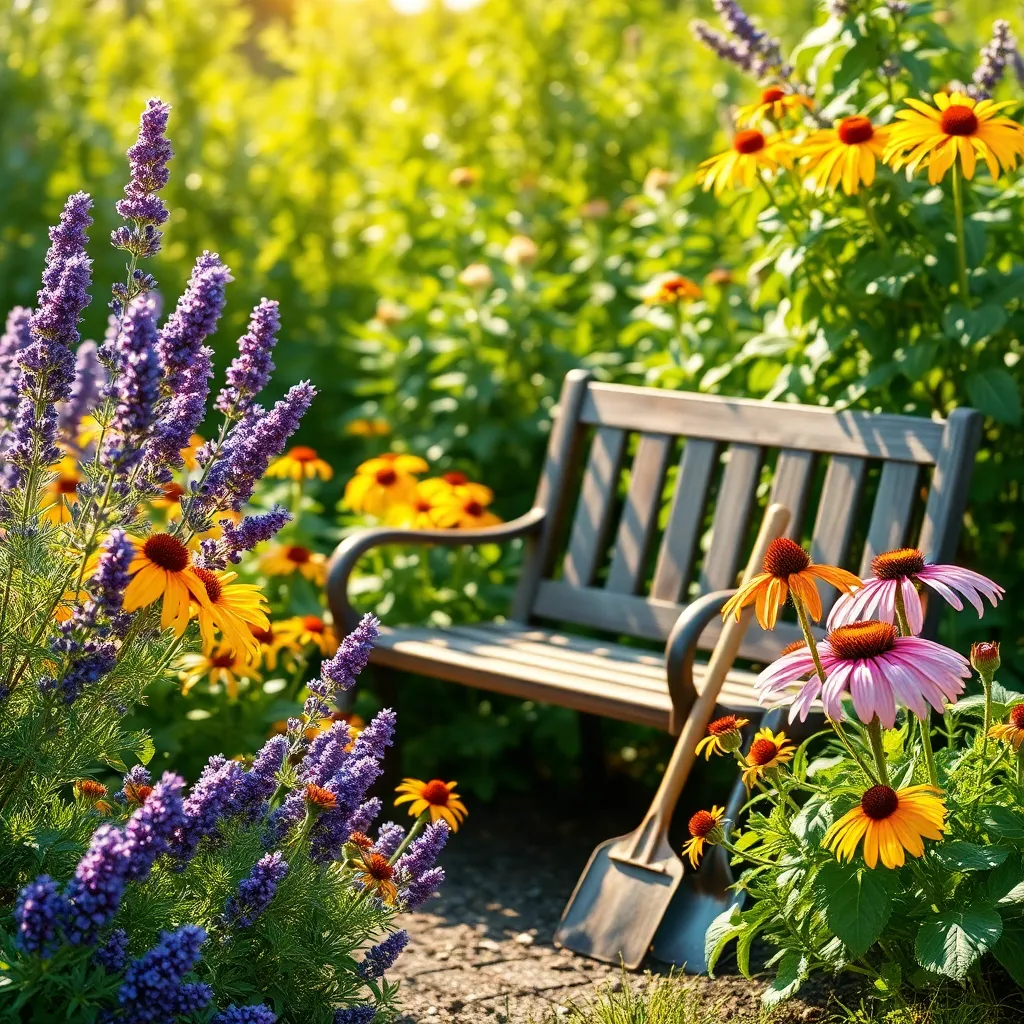
For gardeners seeking low-maintenance beauty, perennials that resist pests and diseases are a perfect choice. These resilient plants require minimal intervention, allowing you to enjoy a lush garden without constant worry.
One standout is the Black-eyed Susan, known for its bright yellow flowers and resistance to most common garden pests. It thrives in well-drained soil and enjoys full sun, making it an excellent choice for sunny spots in your garden.
Another reliable option is the Russian Sage, which not only deters pests but also boasts a lovely lavender hue. This hardy plant prefers dry, sandy soil and thrives with little watering, making it ideal for gardeners who may forget their watering schedule.
For those looking for a shade-tolerant option, Hostas offer lush foliage and strong pest resistance. While they prefer moist, well-drained soil, they can thrive with minimal attention once established, especially in partial to full shade areas.
Soil and Climate Considerations

When selecting perennials that can thrive with minimal care, it’s crucial to consider both soil and climate. Perennials are generally more adaptable than annuals, but matching them with the right environmental conditions will ensure their success.
Start by assessing your garden’s soil type, as this will influence which perennials will flourish. Most hardy perennials prefer well-draining soil, so if your soil is heavy clay, consider amending it with organic matter like compost or sand to improve drainage.
Climate plays a significant role in perennial success, and understanding your local hardiness zone can help in selecting the right plants. Choose perennials that are hardy to at least one zone colder than where you live to ensure they can withstand unexpected cold snaps.
For those in hot climates, selecting drought-tolerant perennials is crucial to minimize watering needs. Consider plants like lavender or sedum which thrive in dry conditions and require watering only once every couple of weeks during dry spells.
In contrast, if your garden is in a region with frequent rainfall, focus on perennials that enjoy moist conditions. Hostas and ferns are excellent choices as they can handle wetter soil without succumbing to root rot.
Finally, for gardeners looking to minimize effort, consider perennials with broad adaptability across various soil and climate conditions. Plants like daylilies and coneflowers are renowned for their resilience, thriving in a wide range of environments with little more than an occasional tidy-up.
Maximizing Garden Beauty with Minimal Effort
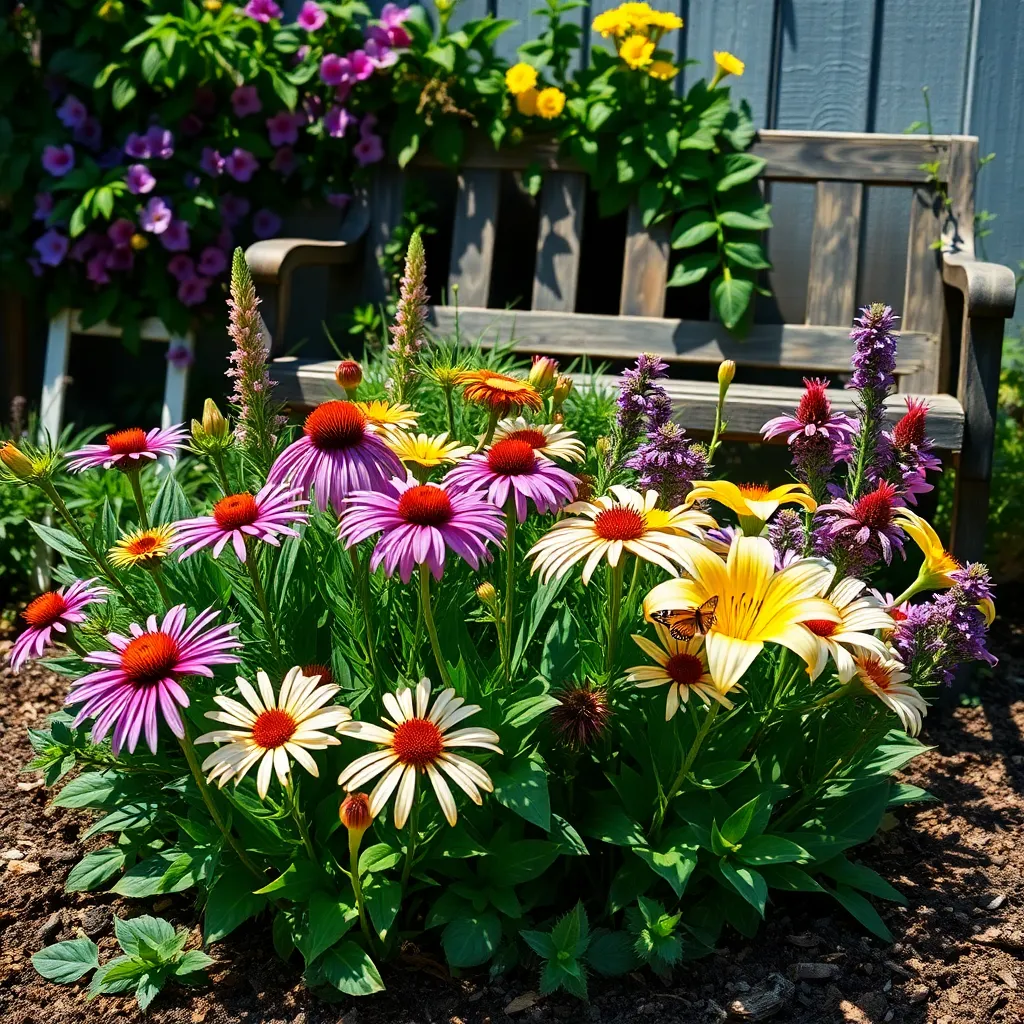
Easily incorporate beauty into your garden by choosing perennials that require minimal maintenance. Plants like daylilies and sedum are perfect choices because they thrive in a variety of soil types and climates.
Daylilies, for instance, are incredibly forgiving and can bloom even in less-than-ideal conditions. To maximize their beauty, plant them in a well-drained area with full sun exposure and water them moderately during dry spells.
For a touch of elegance with little effort, consider adding Russian sage to your garden. This perennial not only survives neglect but also brings vibrant color and fragrance, thriving in poor soil and requiring minimal watering once established.
Mulching is an effective way to reduce weeding and retain soil moisture, which is especially beneficial for neglect-tolerant perennials. A layer of organic mulch, such as shredded bark or leaves, can keep your garden looking tidy and healthy.
Include ground covers like creeping thyme to fill in gaps and create a lush look with little upkeep. These plants require minimal intervention, providing a low-growing, fragrant carpet that suppresses weeds and enhances garden aesthetics.
For those with more experience, consider grouping perennials with similar water and light needs to streamline care. By doing so, you simplify your watering routine and ensure each plant receives the right amount of sunlight.
Conclusion: Growing Success with These Plants
In navigating the ever-evolving landscape of relationships, understanding the resilience of certain foundational principles can be transformative. This article explored nine key concepts: the power of genuine listening, the importance of trust-building, maintaining a sense of humor, the role of empathy, the necessity of shared goals, the value of quality time, the impact of gratitude, the strength in forgiveness, and the art of respectful communication. These “perennials” of relationship success flourish even when neglected, providing a sturdy foundation during trying times.
To put this knowledge into action, take a moment today to express gratitude to your partner for something specific they do that you appreciate. This small gesture can invigorate your bond and set a positive tone for future interactions.
Remember, relationships require nurturing. Bookmark this article to revisit these timeless concepts whenever you need a gentle reminder of what makes a partnership thrive. By investing in these enduring principles, you’re not just tending to your current relationship; you’re laying the groundwork for enduring success. As you move forward, let these insights empower you to cultivate a relationship that not only survives but flourishes, no matter the challenges ahead.

